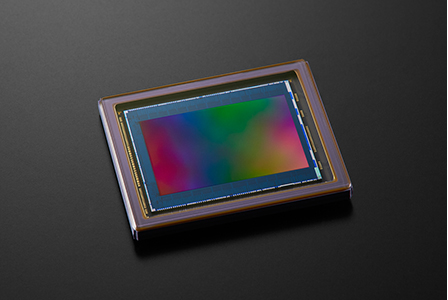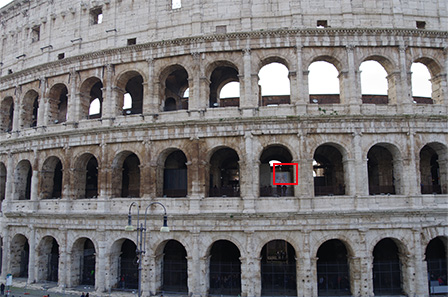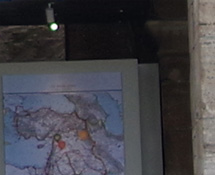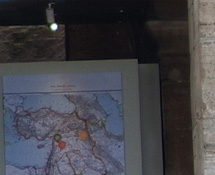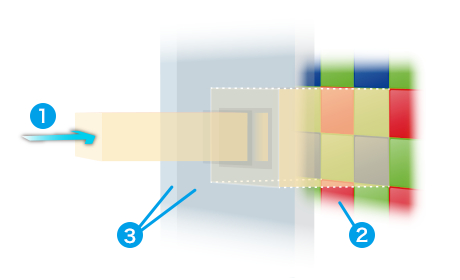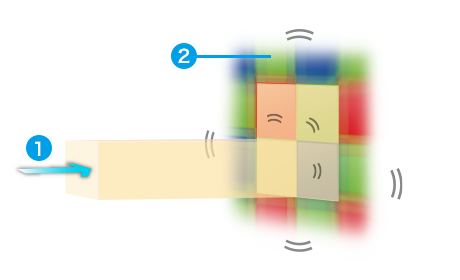Driven by the camera’s in-body SR (Shake-Reduction) mechanism, this innovative system* captures four images of the same scene by shifting the image sensor by a single pixel for each image, then synthesizing them into a single composite image. Because it obtains all the color data in each pixel to compose the image, it delivers super-high-resolution images which are far more truthful than those captured by normal shooting processes. It assures true-to-life color reproduction without false colors, while effectively reducing annoying noise. When the Motion Correction function** is activated, it automatically detects the amount of the subject’s movement during exposure, and minimizes negative effects during the synthesizing process.
* When using this system, the user is advised to stabilize the camera firmly on a tripod, and use either the self-timer setting of the drive mode or a mirror lock-up function.
* This system may not produce the desired effect when the subject is in motion, or the camera is shaken during exposure.
** The Motion Correction function may not correct certain types of subject movement. It does not guarantee that the movement will be properly corrected for all subjects. The user may turn this function off when needed.













